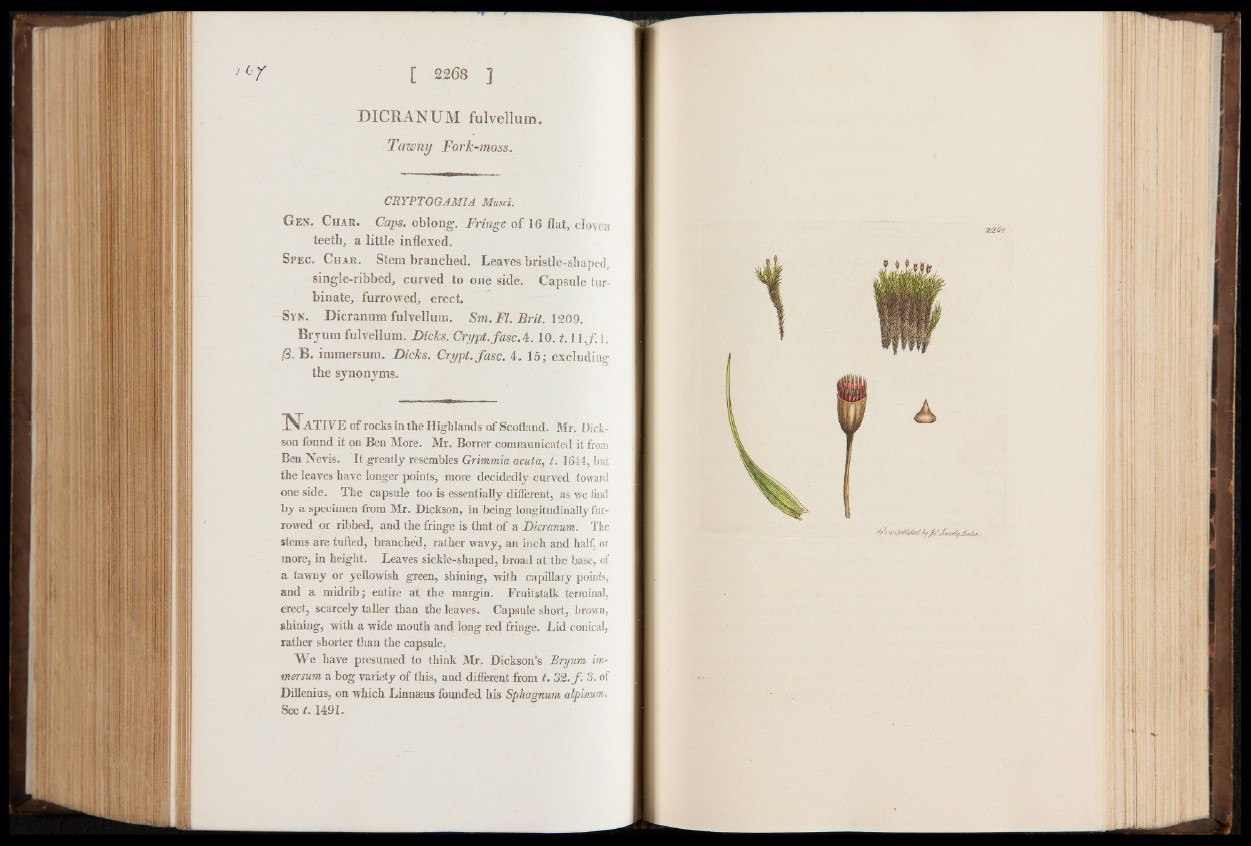
DICRANUM fulvellum.
Tawny Fork-moss.
CRYPTOGAMIA Musa.
G en. Char. Caps, oblong. Fringe o f 16 flat, cloven
teeth, a little indexed.
Spec. Char. Stem b ra n c h e d . L e a v e s bristle-sh aped ,
s in g le - r ib b ed , cu r v e d to one s ide. C a p su le tu rb
in a te , fu r row e d , e re c t.
Sym. D ic r a n um fulvellum. Sm. Fl. Brit. 1209.
B r ju m fu lv e llum . Dicks. Crypt.fasc.4. 10. 1 .1 1 .ƒ. 1.
/3. B . immersum. Dicks. Crypt, fasc . 4. 15; excluding
the synonyms.
l ^ A T IV E o f ro c k s in th e Highlands o f Scotland. Mr. Dickson
found it on Ben More. Mr. Borrer communicated it from
Ben Nevis. I t greatly resembles Grimmia acuta, t. 1644, but
th e leaves have longer points, more decidedly curved toward
one side. The capsule too is essentially different, as we find
b y a specimen from Mr. Dickson, in being longitudinally furrowed
or ribbed, and the fringe is th a t o f a Dicranum. The
stems are tufted, branched, rath er wavy, an inch and half, or
more, in height. Leaves sickle-shaped, broad a t th e base, of
a tawny or yellowish green, shining, with capillary points,
an d a m id rib ; entire a t th e margin. Fruitstalk terminal,
erect, scarcely taller than the leaves. Capsule short, brown,
shining, with a wide mouth and long red fringe. L id conical,
rather shorter th an the capsule.
W e have presumed to think Mr. Dickson’s Bryum immersum
a bog variety o f this, and different from t. 32. f . 3. of
Dillenius, on which Linnaeus founded his Sphagnum alpinwm.
See 1 .1491.